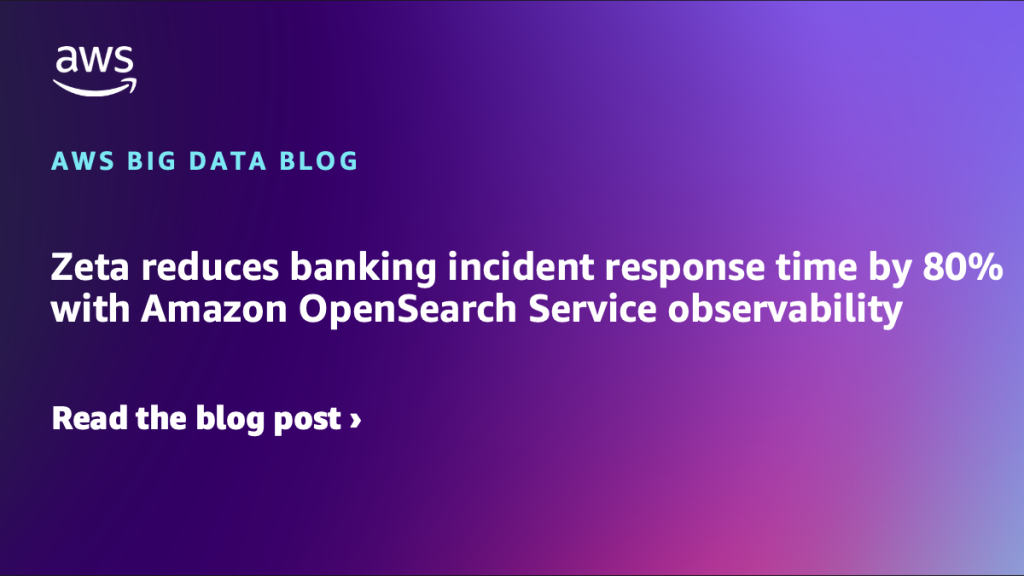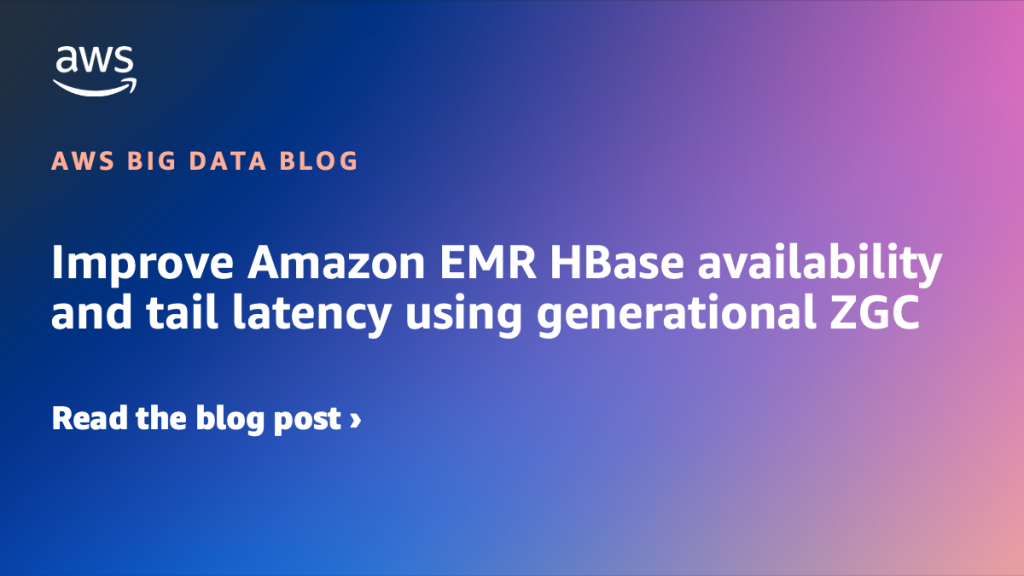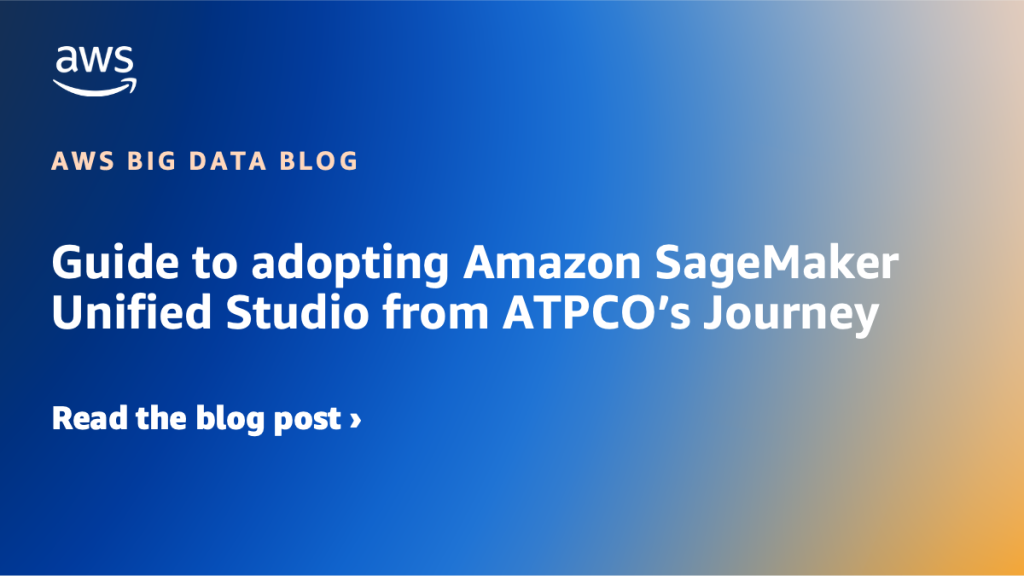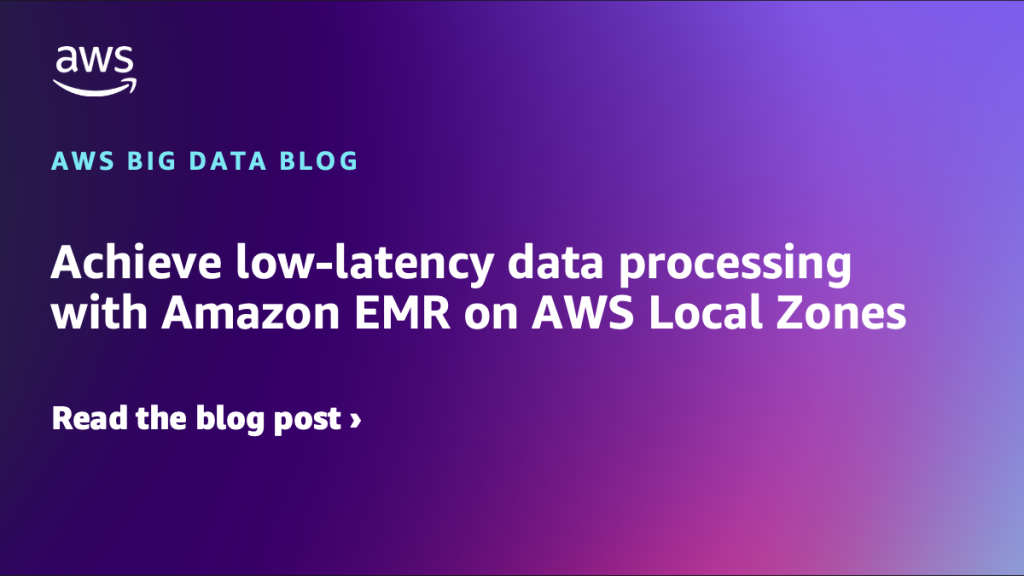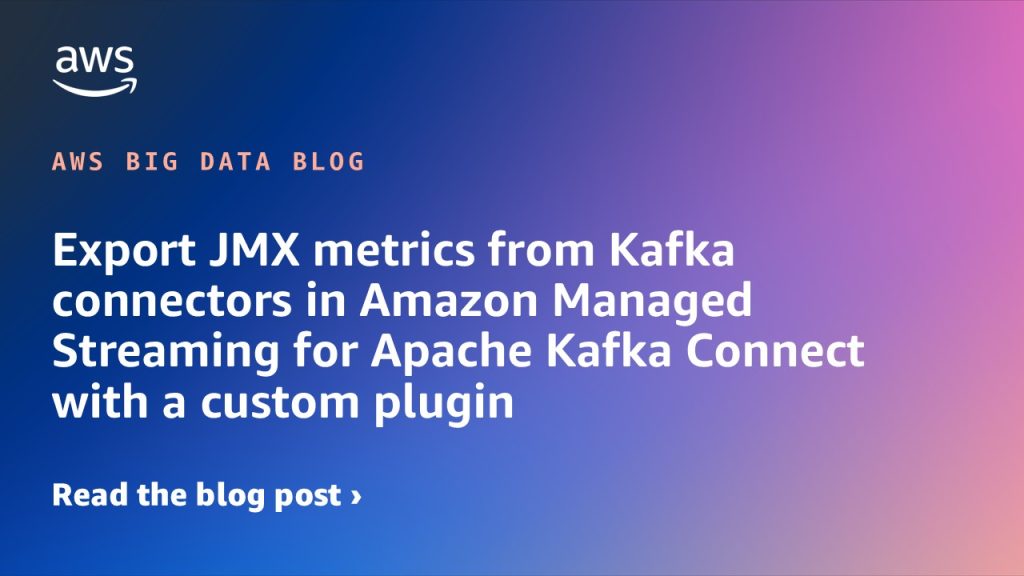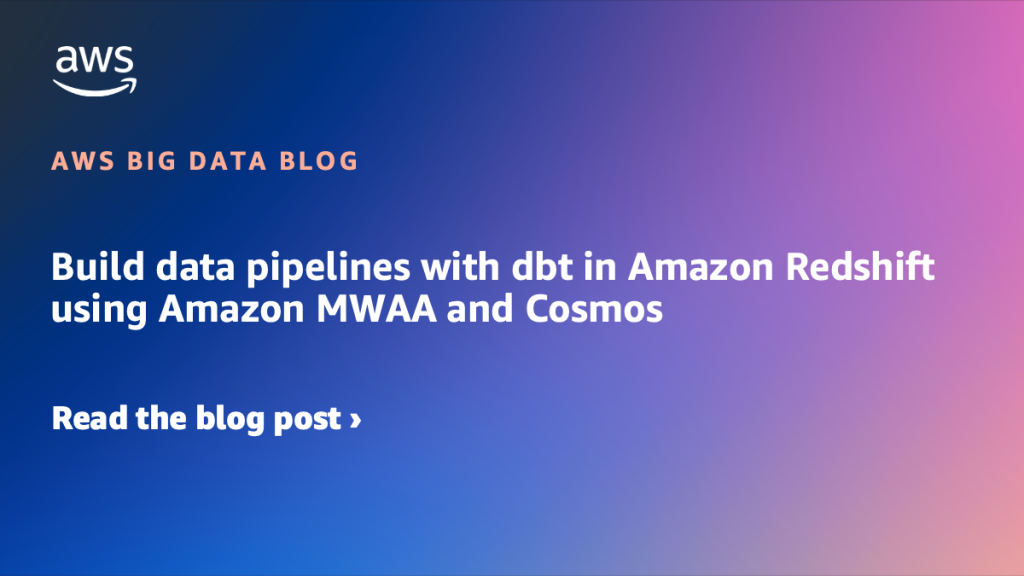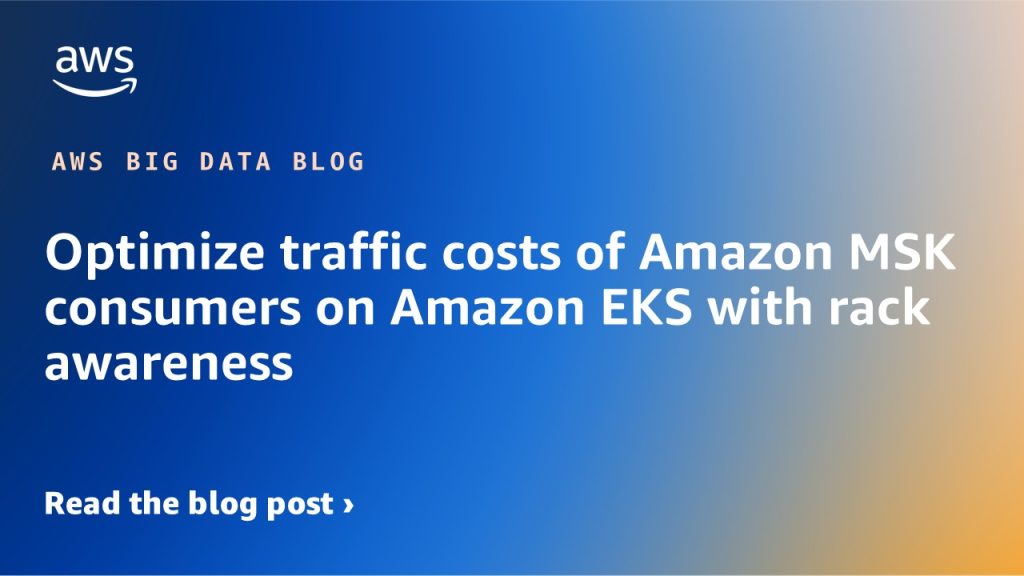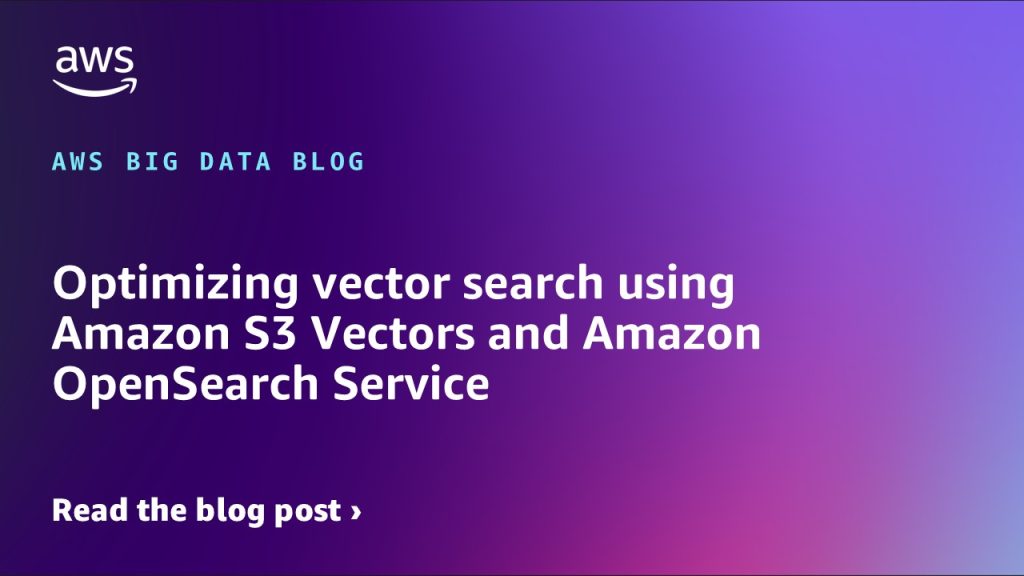AWS Big Data Blog
Category: Advanced (300)
Zeta reduces banking incident response time by 80% with Amazon OpenSearch Service observability
In this post we explain how Zeta built a more unified monitoring solution using Amazon OpenSearch Service that improved performance, reduced manual processes, and increased end-user satisfaction. Zeta has achieved over an 80% reduction in mean time to resolution (MTTR), with incident response times decreasing from 30+ minutes to under 5 minutes.
Improve Amazon EMR HBase availability and tail latency using generational ZGC
Large-scale HBase deployments on Amazon EMR suffer from unpredictable garbage collection behavior that creates performance bottlenecks for business-critical applications. To solve this problem, Amazon EMR leverages Oracle’s generational ZGC technology from JDK 21 to deliver predictable, sub-millisecond pause times. This post shows you how to configure generational ZGC in Amazon EMR 7.10.0, apply performance tuning methods, and optimize HBase RegionServer garbage collection settings.
Guide to adopting Amazon SageMaker Unified Studio from ATPCO’s Journey
ATPCO is the backbone of modern airline retailing, helping airlines and third-party channels deliver the right offers to customers at the right time. ATPCO addressed data governance challenges using Amazon DataZone. SageMaker Unified Studio, built on the same architecture as Amazon DataZone, offers additional capabilities, so users can complete various tasks such as building data pipelines using AWS Glue and Amazon EMR, or conducting analyses using Amazon Athena and Amazon Redshift query editor across diverse datasets, all within a single, unified environment. In this post, we walk you through the challenges ATPCO addresses for their business using SageMaker Unified Studio.
Achieve low-latency data processing with Amazon EMR on AWS Local Zones
By deploying Amazon EMR on AWS Local Zones, organizations can achieve single-digit millisecond latency data processing for applications while maintaining data residency compliance. This post demonstrates how to use AWS Local Zones to deploy EMR clusters closer to your users, enabling millisecond-level response times.
Export JMX metrics from Kafka connectors in Amazon Managed Streaming for Apache Kafka Connect with a custom plugin
In this post, we demonstrate how you can export the JMX metrics for Debezium connector when used with Amazon MSK Connect.
Build data pipelines with dbt in Amazon Redshift using Amazon MWAA and Cosmos
In this post, we explore a streamlined, configuration-driven approach to orchestrate dbt Core jobs using Amazon Managed Workflows for Apache Airflow (Amazon MWAA) and Cosmos, an open source package. These jobs run transformations on Amazon Redshift. With this setup, teams can collaborate effectively while maintaining data quality, operational efficiency, and observability.
Optimize traffic costs of Amazon MSK consumers on Amazon EKS with rack awareness
In this post, we walk you through a solution for implementing rack awareness in consumer applications that are dynamically deployed across multiple Availability Zones using Amazon EKS.
Optimizing vector search using Amazon S3 Vectors and Amazon OpenSearch Service
We now have a public preview of two integrations between Amazon Simple Storage Service (Amazon S3) Vectors and Amazon OpenSearch Service that give you more flexibility in how you store and search vector embeddings. In this post, we walk through this seamless integration, providing you with flexible options for vector search implementation.
Perform per-project cost allocation in Amazon SageMaker Unified Studio
Amazon SageMaker Unified Studio enables per-project cost allocation through resource tagging, allowing organizations to track and manage costs across different projects and domains effectively. This post demonstrates how to implement cost tracking using AWS Billing and Cost Management tools, including Cost Explorer and Data Exports, to help finance and business analysts follow FinOps best practices for controlling cloud infrastructure costs.
How Stifel built a modern data platform using AWS Glue and an event-driven domain architecture
In this post, we show you how Stifel implemented a modern data platform using AWS services and open data standards, building an event-driven architecture for domain data products while centralizing the metadata to facilitate discovery and sharing of data products.
